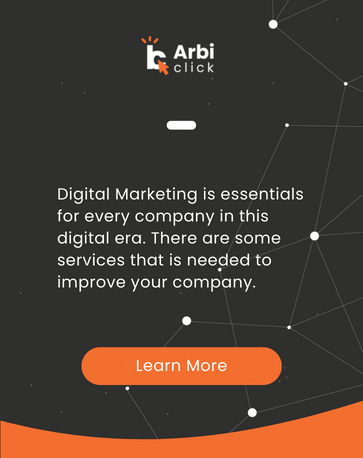The A/B Testing Formula:
Marketing Success Made Simple
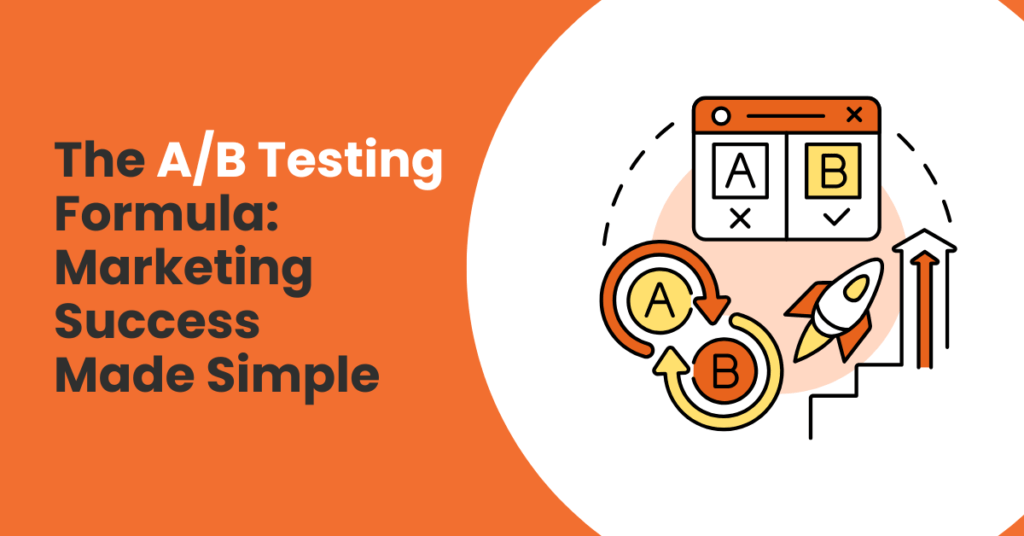
As written in the title, would A/B campaign formula could bring marketing success? In today’s digital landscape, businesses are constantly seeking effective ways to optimize their marketing efforts without relying on guesswork.
The modern marketing environment presents unprecedented complexity, with countless channels, platforms, and strategies all competing for attention and resources.
Marketing professionals find themselves navigating an ever-changing ecosystem where consumer behavior evolves rapidly, algorithms shift without warning, and new technologies emerge at breakneck speed, creating both opportunities and challenges that require sophisticated yet accessible solutions.
What appears visually appealing or theoretically sound may not resonate with your actual audience, a reality that many marketing teams discover only after investing significant time, effort, and budget into campaigns that fail to deliver expected results.

The disconnect between internal assumptions and customer preferences represents one of the most persistent challenges in modern marketing, where decision-makers often rely on personal taste, industry best practices, or competitive analysis rather than direct customer feedback and behavioral data.
This gap between expectation and reality can lead to missed opportunities, wasted resources, and marketing strategies that satisfy internal stakeholders but fail to drive meaningful business outcomes.
The challenge intensifies as businesses face increasing pressure to demonstrate clear return on investment while simultaneously exploring innovative approaches that differentiate their brand in crowded marketplaces.
Traditional marketing methods that once delivered predictable results may no longer be effective, forcing organizations to adapt quickly while maintaining performance across existing channels.
The need for reliable, systematic approaches to marketing optimization has never been more critical, as businesses seek methodologies that reduce risk while maximizing the potential for breakthrough improvements.
This is where A/B testing becomes invaluable—a straightforward yet powerful methodology for testing, learning, and optimizing campaigns using concrete data rather than assumptions or subjective preferences.
Also read: How to Convert Clicks: Guide to Improve Ecommerce Landing Pages

Unlike complex marketing automation systems or expensive analytics platforms that require extensive technical expertise, A/B testing offers an accessible path to data-driven decision making that any marketing professional can master regardless of their background or organizational resources.
The methodology cuts through the noise of conflicting opinions and theoretical debates to provide clear, actionable insights based on actual customer behavior and measurable outcomes.
The beauty of A/B testing lies in its elegant simplicity and immediate applicability across virtually any marketing channel or campaign element.
This scientific approach transforms marketing optimization from an art form dependent on creativity and intuition into a reliable process that generates predictable, measurable improvements.
By implementing systematic testing protocols, organizations can make confident strategic decisions backed by evidence rather than hope, creating sustainable competitive advantages that compound over time through continuous learning and improvement.
Let’s explore what A/B testing entails, why it’s essential for modern marketing success, and how you can leverage this powerful formula to achieve sustained growth and optimization across all your marketing initiatives, regardless of your current experience level or available resources.
Also read: 10 Tips for Effective Digital Marketing

What Is A/B Testing?
A/B testing (also known as split testing) involves comparing two versions of a webpage, advertisement, email, or other marketing materials to determine which performs more effectively.
- Version A (control): The current design, copy, or setup.
- Version B (variation): A modified version with one element changed.
By presenting both versions to similar audiences, you can measure which one generates more clicks, registrations, purchases, or other desired outcomes.
Why A/B Testing Matters
- Eliminates Guesswork – Rather than relying on assumptions, you base decisions on actual user behavior data.
- Enhances Conversion Rates – Even minor changes such as button colors or headline text can substantially increase conversions.
- Minimizes Risk – Test modifications before implementing them across your entire website or campaign.
- Improves User Experience – You discover user preferences, creating smoother customer journeys and stronger engagement.
What Can You Test?
A/B testing extends beyond website buttons. You can evaluate virtually any marketing element, including:
- Websites & Landing Pages
– Headlines and value propositions
– CTA button text (“Purchase Now” vs. “Shop Today”)
– Page layouts or visual elements - Email Marketing
– Subject line variations
– Delivery timing
– Personalization approaches (“Hello [Name]”) - Advertisements
– Copy variations and messaging
– Visual assets or graphics
– Audience targeting strategies
Also read: Unleashing the Power of Click Marketing As PPC, CPC, and CTR
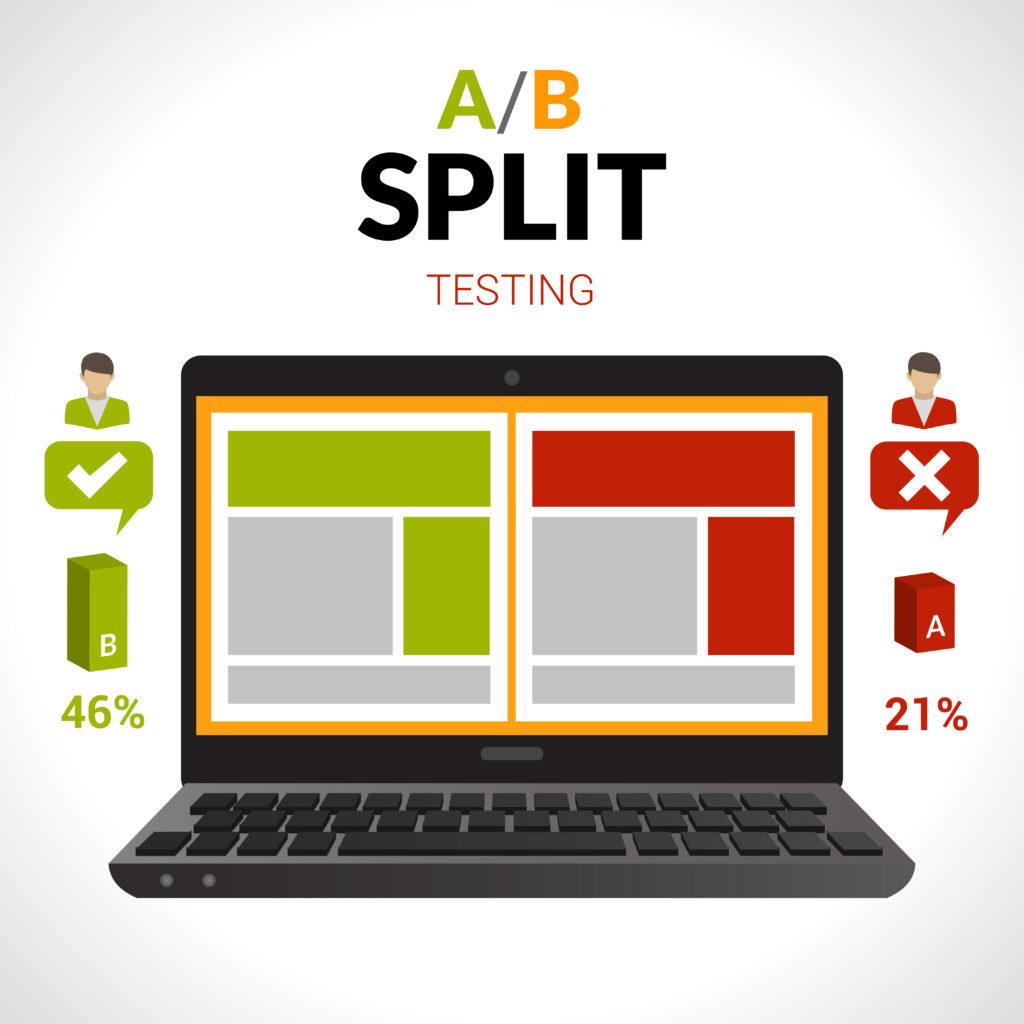
How to Run A/B Test (Step by Step)
Executing A/B tests may appear daunting initially, but the process fundamentally relies on adhering to a systematic, well-defined methodology.
Consider it a controlled scientific investigation applied to your marketing initiatives—you evaluate individual modifications systematically, assess their performance impact, and allow empirical evidence to inform your strategic choices.
Through decomposing the process into clear, actionable phases, you can remove speculation from your optimization efforts and implement confident enhancements that generate measurable business outcomes.
The following structured approach provides a comprehensive blueprint for designing and implementing successful A/B testing campaigns:
- Establish Clear Objectives Determine what you want to improve: click-through rates, form submissions, sales conversions, etc.
- Select a Testing Variable Example: test two different headlines on a landing page.
- Develop Two Versions Version A = current headline. Version B = new headline.
- Divide Your Audience Randomly and evenly distribute visitors between both versions.
- Maintain Adequate Testing Duration Avoid premature conclusions. Allow sufficient traffic for statistically valid results.
- Analyze Results & Implement Changes If Version B outperforms A, implement it permanently. If not, maintain A—or design new tests.
Professional Tip:
Test one element at a time. Modifying multiple variables simultaneously makes it difficult to identify what caused the performance difference.
Also read: 10 Essential SEO Tools Every Marketer Should Use
Real-World Example
An online fashion retailer wanted to increase newsletter subscription rates.
- Version A: “Subscribe for updates.”
- Version B: “Join 50,000+ fashion enthusiasts and get 10% off.”
After conducting the test, the result shows that Version B increased subscriptions by 42%. A simple messaging and/or copy change delivered significant results.
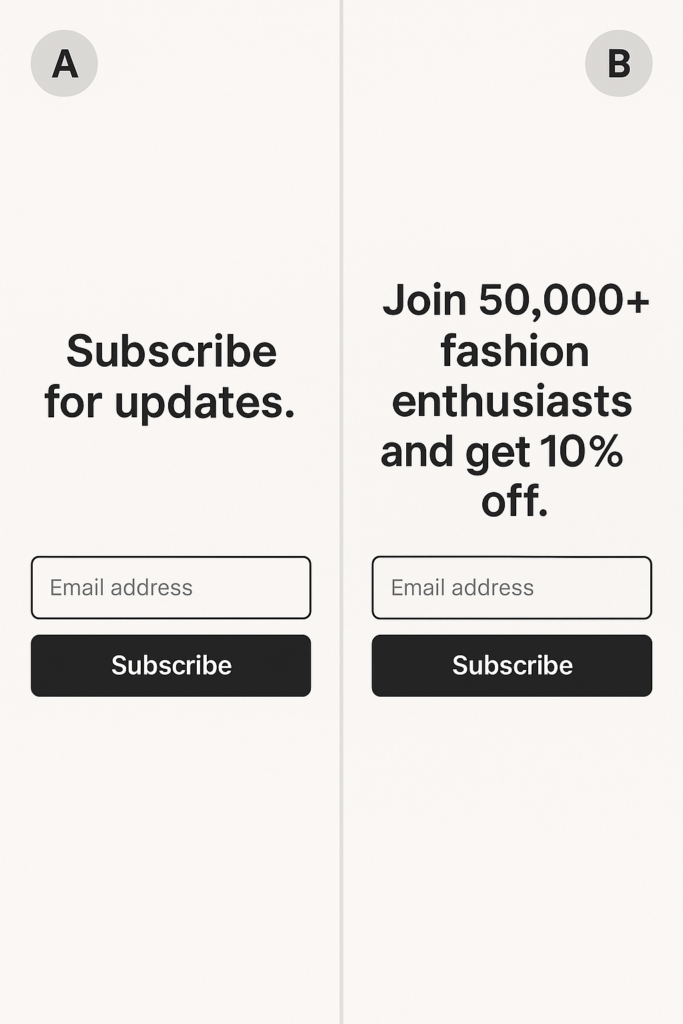
Common Mistakes to Avoid
Despite meticulous planning and preparation, A/B testing initiatives frequently encounter significant obstacles when marketing professionals inadvertently implement problematic practices that compromise result validity.
Many practitioners either accelerate their testing timelines prematurely or neglect fundamental statistical principles, resulting in unreliable data interpretation and inefficient resource allocation.
To maximize the value derived from systematic testing efforts, understanding potential pitfalls proves equally crucial as mastering established methodologies and best practices.
The following compilation identifies the most prevalent A/B testing errors that practitioners should vigilantly avoid to guarantee that their experimental outcomes remain both statistically sound and strategically valuable:
– Testing multiple elements simultaneously
– Ending tests prematurely
– Disregarding statistical significance
– Testing without clear hypotheses
Also read: Best 5 Proven Digital Marketing Strategies
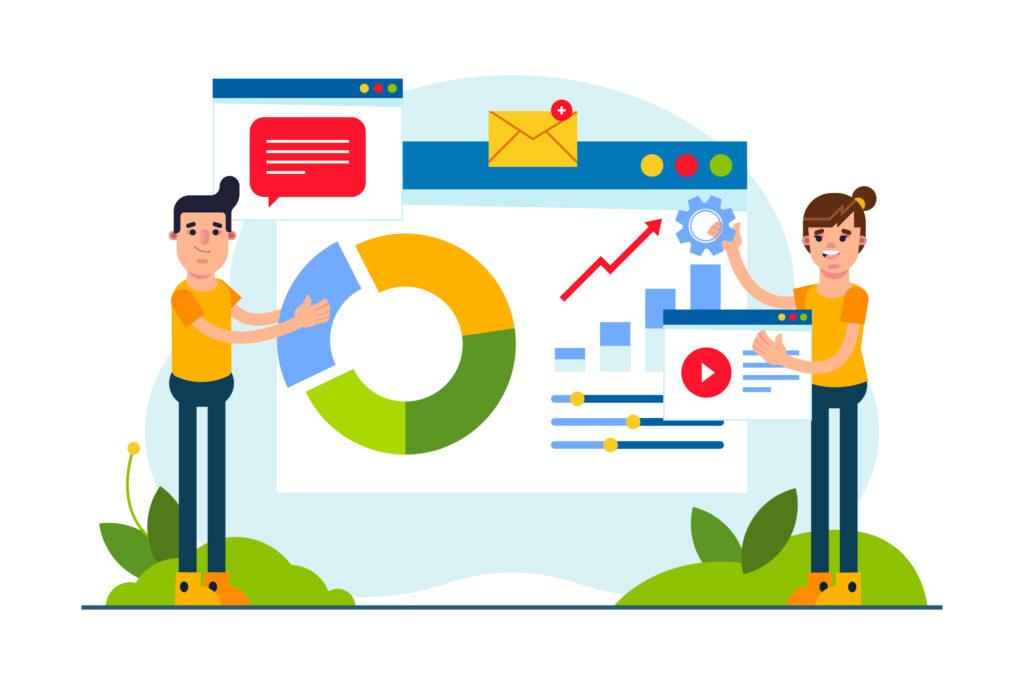
Your A/B Test Takeaway
The A/B testing formula transforms marketing from speculation into simple, predictable success by providing a systematic framework that any professional can follow to achieve consistent optimization results.
It’s not about completely overhauling your campaigns overnight—it’s about applying a proven formula that makes small, continuous improvements accumulate into substantial gains over time.
Organizations that consistently apply the formula develop deeper understanding of their customers and more effective marketing strategies compared to competitors who rely on guesswork approaches.
This creates sustainable competitive advantages that extend far beyond individual campaign improvements.
The next time you’re uncertain about your headline, CTA, or ad creative, don’t rely on assumptions. Apply the formula: test systematically, measure objectively, and let your audience show you what works through their actual behavior. This approach consistently delivers marketing success regardless of budget constraints or technical expertise.
Remember, marketing success isn’t about having the most sophisticated tools—it’s about consistently applying proven methodologies that turn uncertainty into measurable results. The A/B testing formula provides exactly that foundation for sustainable marketing excellence.
Also read: How Social Media Management Can Help to Boost Your Company
